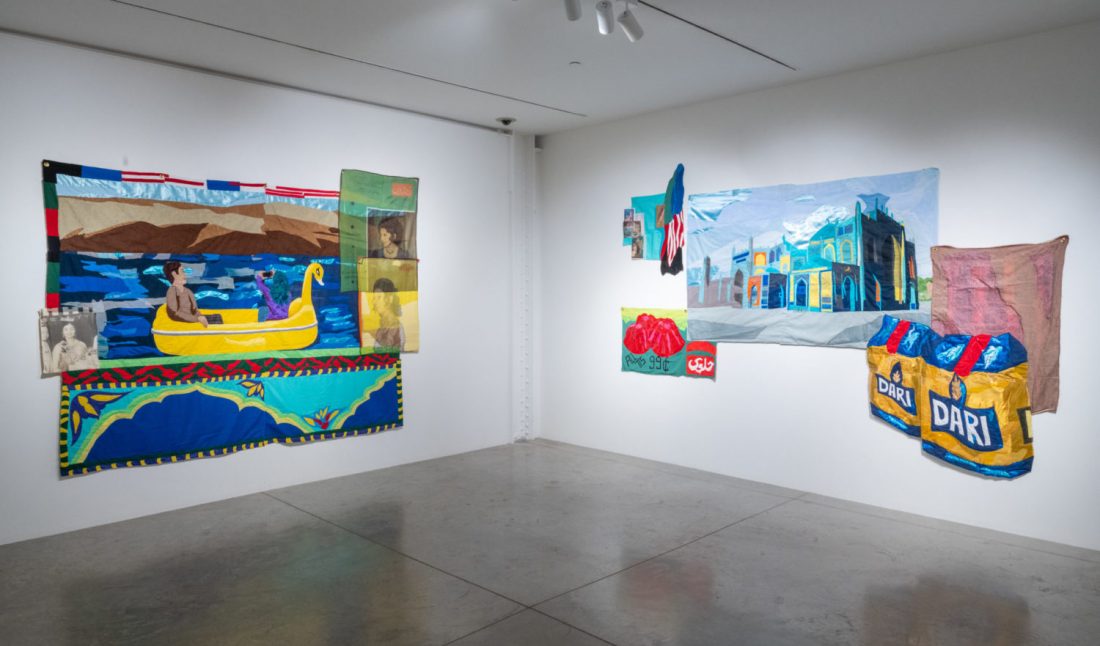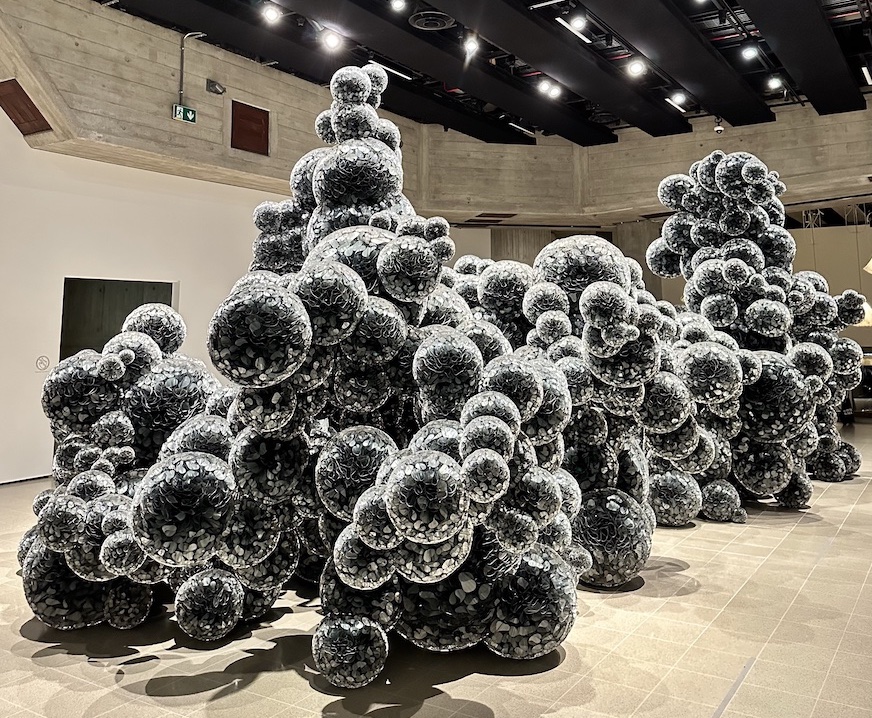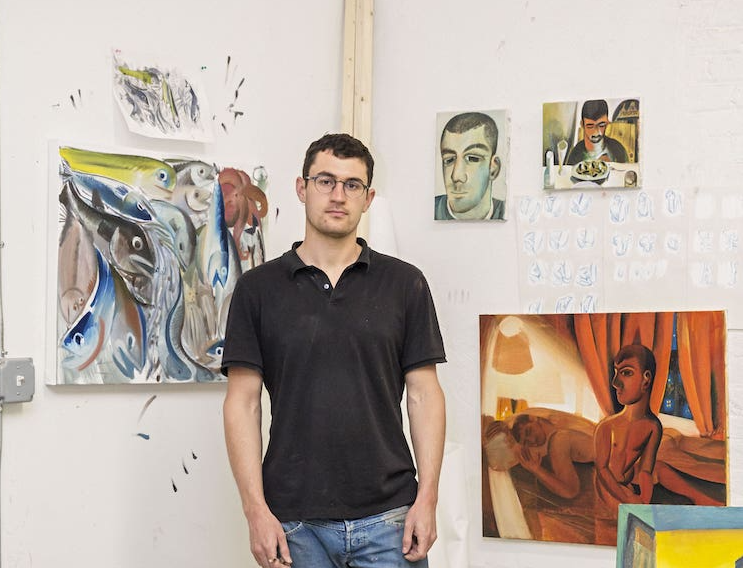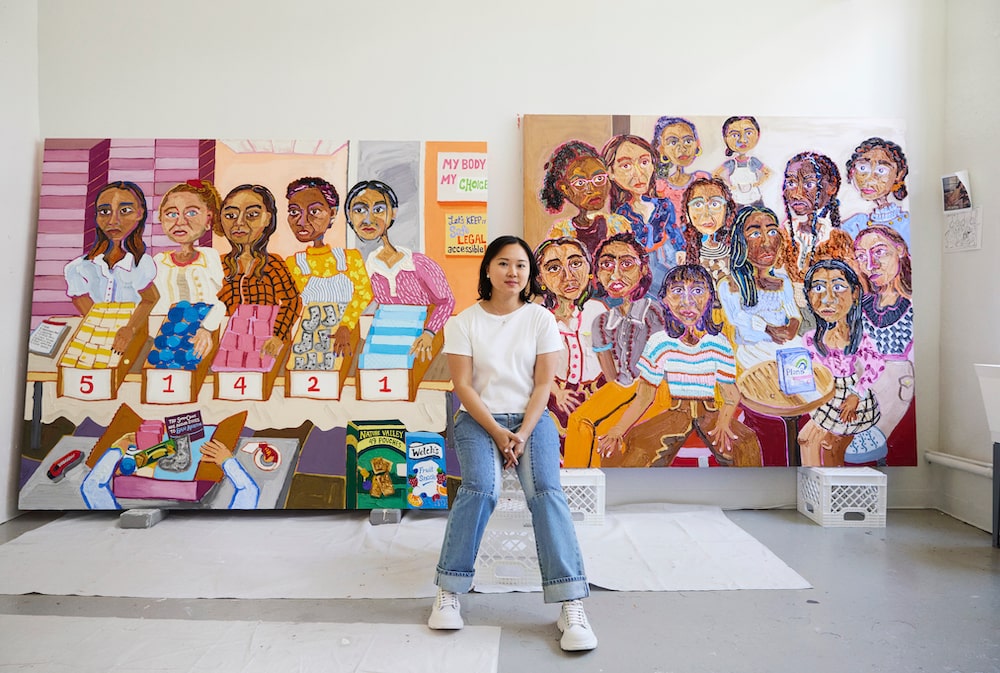The practice of the artist Hangama Amiri centers brightly colored, intricate textile works that honor her life and memories before emigrating from Afghanistan to North America. Including other mediums like printmaking, drawing, and painting, Amiri’s art often examines the effects of gender, geopolitical conflicts, and social norms on the lives of Afghan women.
For her solo exhibition at Albertz Benda, “Wandering Amidst the Colors,” on view through May 1, the artist employed her work to explore the concept of home. It is something, Amiri found, that can be just as much of a feeling as it is a location. By interacting with the Afghan communities of New York, she created vibrant imagery drawing from the locations, objects, and people she experienced, which reminded her of home, like a 26 x 23 inches replication of a familiar product titled Sadaf Tea and advertisement-reminiscent Magic Salon.
To learn more about Amiri’s practice and the works on view, Whitewall spoke with the artist.
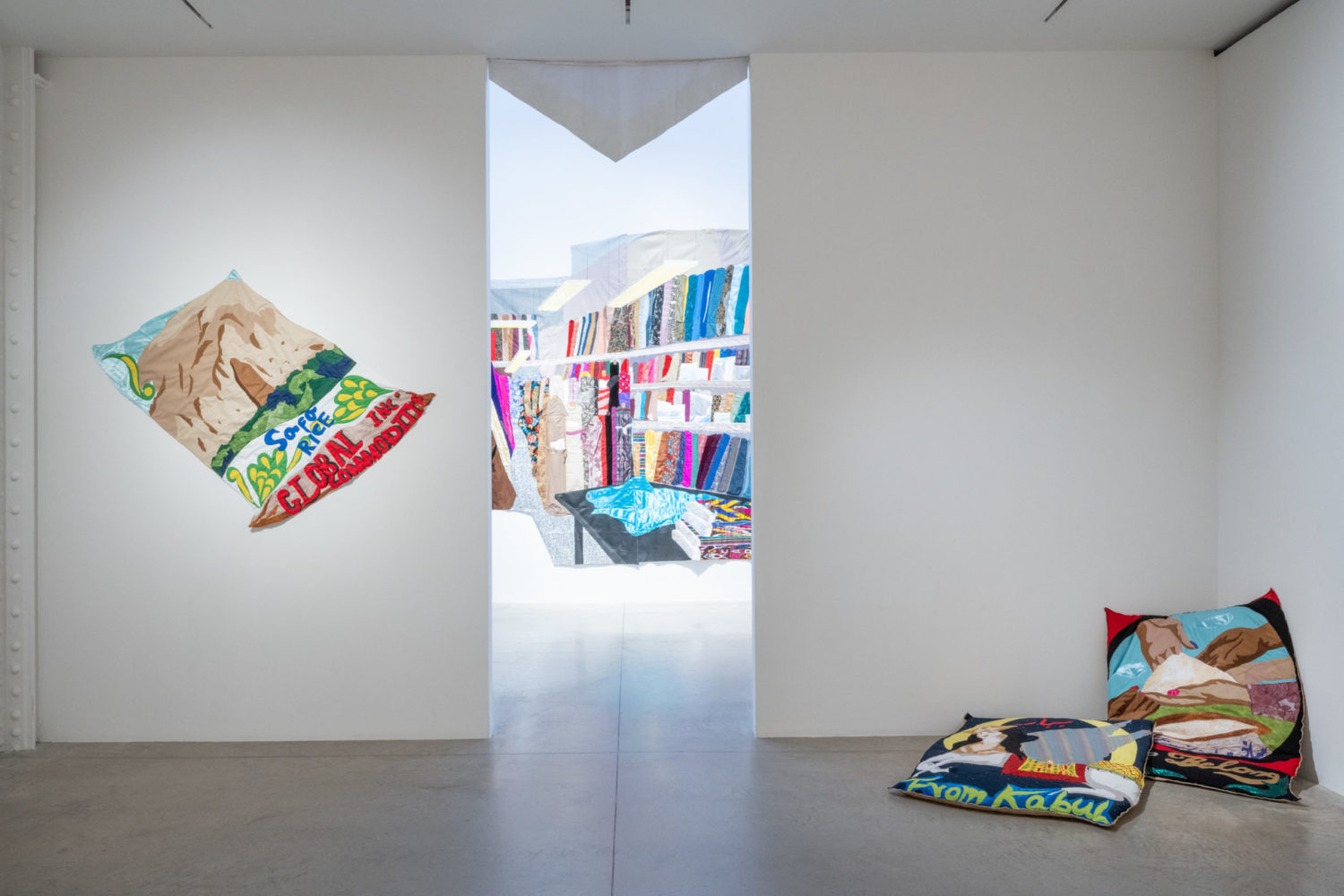 Installation view of Hanagama Amiri’s “Wandering Admidst the Colors,” photo by Casey Kelbaugh, courtesy of the artist and Albertz Benda.
Installation view of Hanagama Amiri’s “Wandering Admidst the Colors,” photo by Casey Kelbaugh, courtesy of the artist and Albertz Benda.
WHITEWALL: The exhibition draws from your experiences as a refugee to look at New York’s Afghan diaspora. Can you tell us about your starting point and the narratives explored here?
HANGAMA AMIRI: I have been living in America for almost four years now, but living through this pandemic in New Haven, Connecticut after graduating from Yale led me to start thinking about what the definition of home means to me. The idea of home is often connected to a physical territory or feelings that draw on a combination of lived experiences and memories, so I spent this past year searching for, and connecting with, Afghan diasporic communities in the Flushing and Jackson Heights neighborhoods in Queens. I walked through these neighborhoods in order to find places that felt familiar or gave me a sense of belonging.
The narratives I am exploring in the work are in dialogue with the specific spaces I visited and the people I had conversations with. The Kouchi Supermarket in Flushing, for example, belongs to an Afghan immigrant who has owned the store for more than twenty-five years. For me, being in his store and looking at the range of products—a large majority of which are available due to globalization—reminded me of the items I grew up with such as the sacks of rice from Afghanistan, India, and Pakistan.
Another space I visited was A.K. Fabrics in New York’s fashion district, which is also Afghan owned. I started buying fabrics from the store owner in 2019 while I was working on my degree at Yale, but we have had many conversations since then about the fabrics and textiles which are made in Central Asia and Afghanistan. Whenever I go to New York and look at his collection of textiles, I am brought closer to Tajikistan, Pakistan, and India.
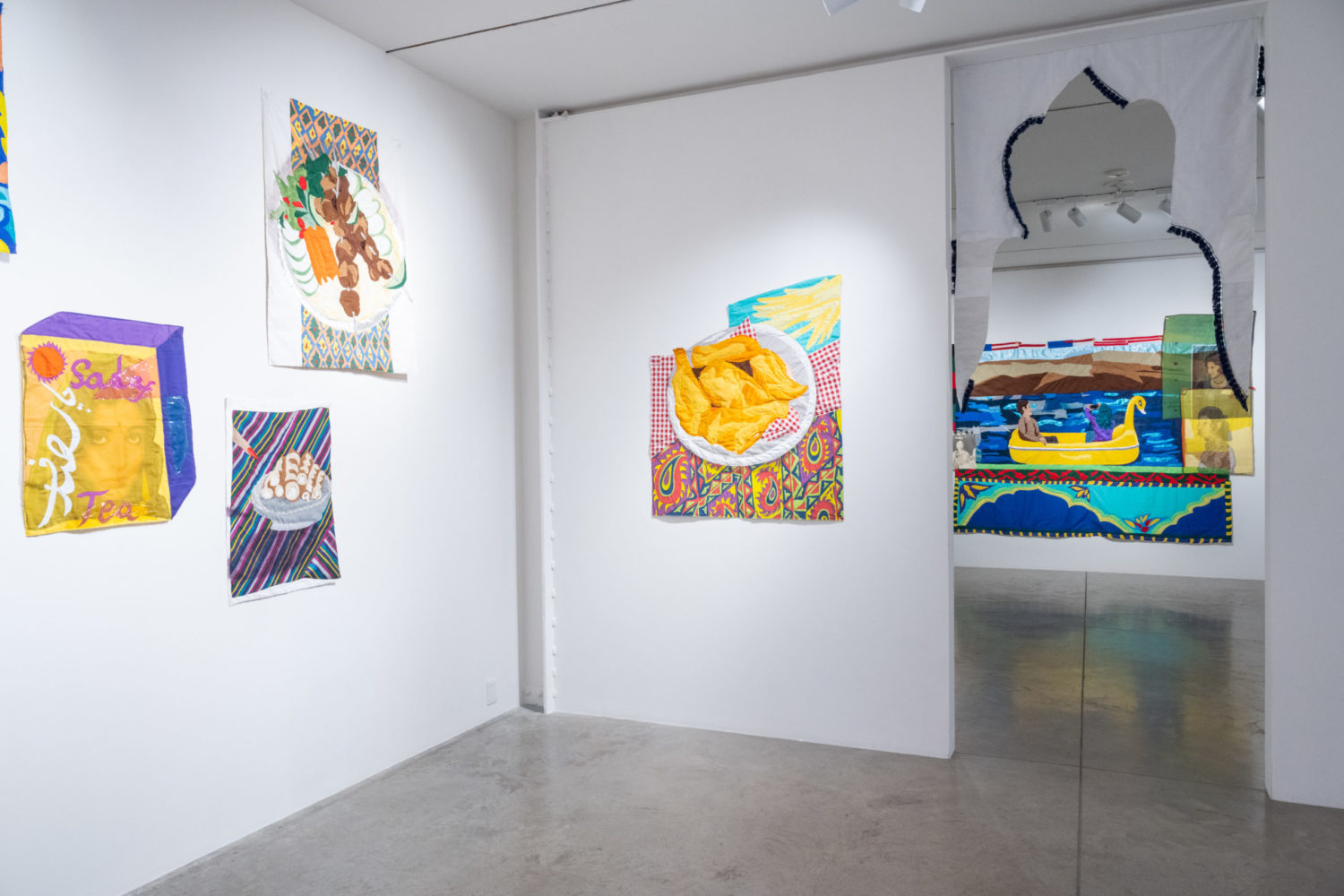 Installation view of Hanagama Amiri’s “Wandering Admidst the Colors,” photo by Casey Kelbaugh, courtesy of the artist and Albertz Benda.
Installation view of Hanagama Amiri’s “Wandering Admidst the Colors,” photo by Casey Kelbaugh, courtesy of the artist and Albertz Benda.
WW: These textile and mixed media works are large in scale and greatly detailed. Can you give us a look at your process?
HA: I always start my work with small drawings to work out the composition. I use colored pencil, marker, or gouache to define my color palette before selecting the fabrics I will use in relation to the textile pieces I plan on making. From there, I redraw my compositions on brown paper so I can get a better sense for the scale of the work. After the drawings are transferred, I use the technique of applique to cut and reassemble pieces of fabric to make the whole image.
WW: Your practice as a whole examines gender norms and geopolitics in relation to the lives of Afghan women. What does that look like in the context of this exhibition?
HA: The gender questions are definitely reflected in most of my pieces such as Gulzar, Beauty Salon, Rupture and Repair, Spa Facial and Body, and Magic Salon. These are the spaces I had my nails painted or received a haircut but being introduced to the female immigrant workers there gave me a sense of connection and care. While there, I noticed and was really interested in the contrast of these spaces representing white Caucasian bodies instead of their own skin colors. I see an opening here because I am interested in questions revolving around beauty politics. I choose to question these western bodies that are being visually represented within these diasporic spaces because they are, unfortunately, still being defined by the politics of white/western standards of beauty.
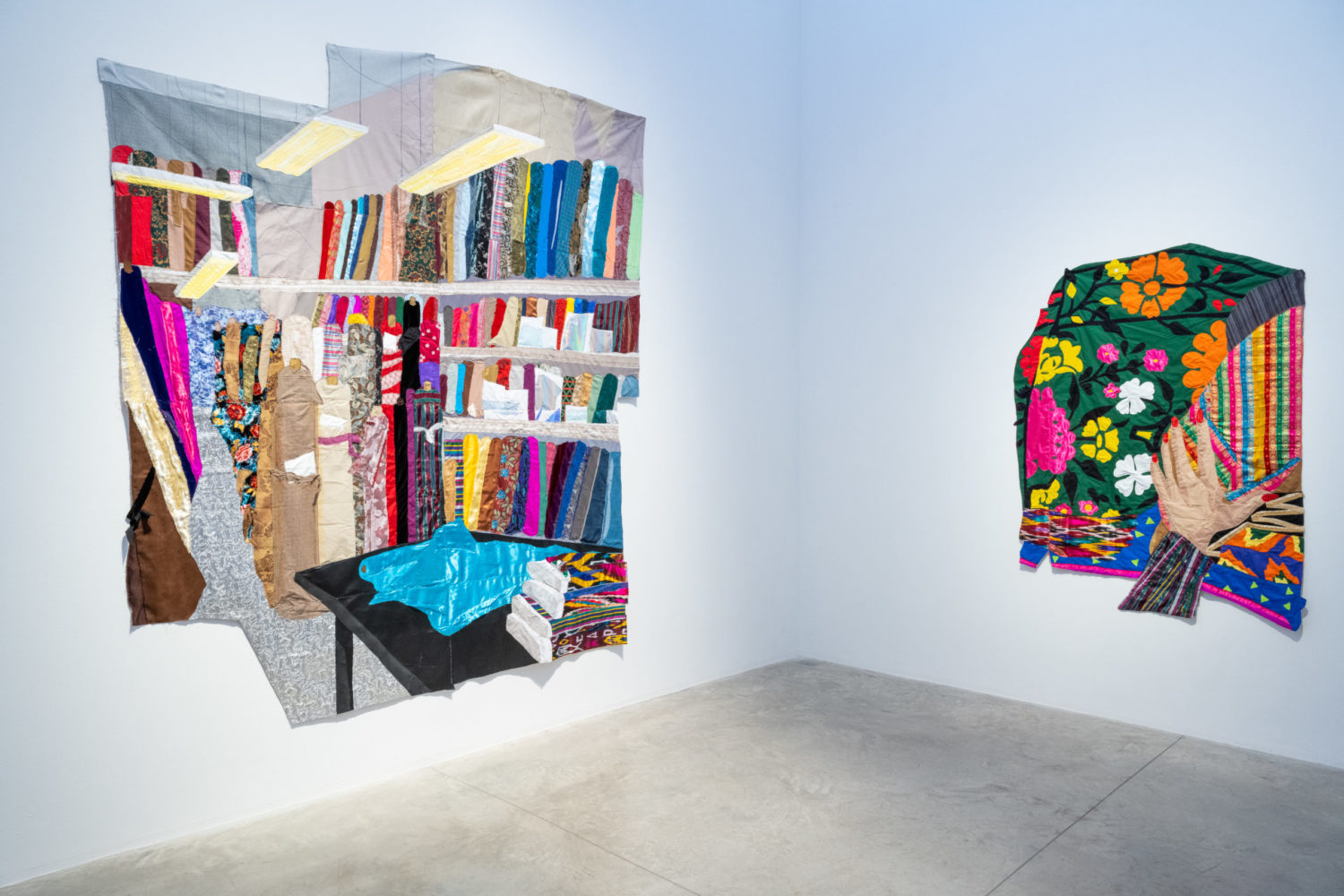 Installation view of Hanagama Amiri’s “Wandering Admidst the Colors,” photo by Casey Kelbaugh, courtesy of the artist and Albertz Benda.
Installation view of Hanagama Amiri’s “Wandering Admidst the Colors,” photo by Casey Kelbaugh, courtesy of the artist and Albertz Benda.
WW: Is there any work in the show that holds a particular significance to you and your own story?
HA: The soul of this exhibition is very autobiographical since every space I have represented or gathered objects from is a dialogue between myself and the spaces I visited. In this particular show the piece Self-portrait with Afghan Suzani Textile reflects my first encounter with an Afghan shop keeper in Manhattan. His store was called Nusraty Afghan Imports.
This was the first shop where I found so many Afghan related antiques, carpets, rugs, and clothes that felt so close to me. The person I met there was a generous old man who up until then lived here more than 20 years. We shared our immigration stories with one another and how we became refugees here. He then reflected on his own memory of being a student in Kabul city in the 70s and 80s. We continued to have a very emotional conversation.
I titled this piece a self-portrait because I was reconnecting with these textiles after such a long time and I represented it in this particular way because it was such a tactile experience. That sense of touch and the texture of that fabric is still with me from that first encounter.
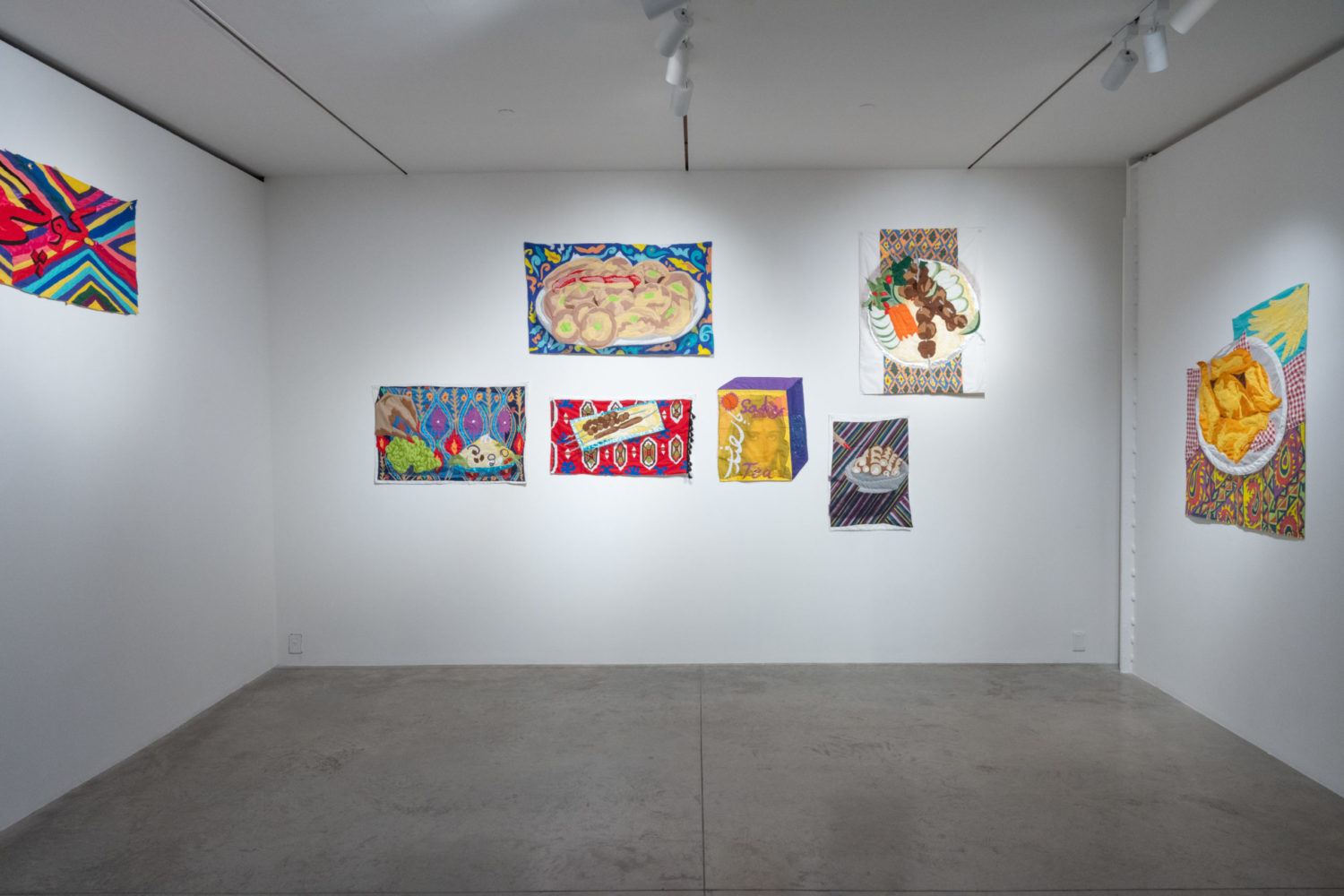 Installation view of Hanagama Amiri’s “Wandering Admidst the Colors,” photo by Casey Kelbaugh, courtesy of the artist and Albertz Benda.
Installation view of Hanagama Amiri’s “Wandering Admidst the Colors,” photo by Casey Kelbaugh, courtesy of the artist and Albertz Benda.
WW: You’ve attributed your use of textiles for its ties to your home and childhood in Afghanistan. What role did textiles play in your life before relocating to Canada? Are there any specific experiences or memories that lead you to this medium?
HA: As a young girl I grew up living close to bazaars whether I was in Kabul, Pakistan, or Tajikistan. Being around these bazaars has influenced my practice as an artist a lot. While growing up in Kabul, Afghanistan, one of my uncles had a tailor shop in the bazaar near where we lived. Every morning before going to school I would greet him and see what he was working on. Besides being exposed to his crafts and shop on a regular basis, the bazaars were always full of textiles and fabrics and other materials from neighboring countries. I had similar experiences in Pakistan where I was introduced to Indian saris and other Pakistani fabrics and textiles which I would wear during Afghan celebratory events.
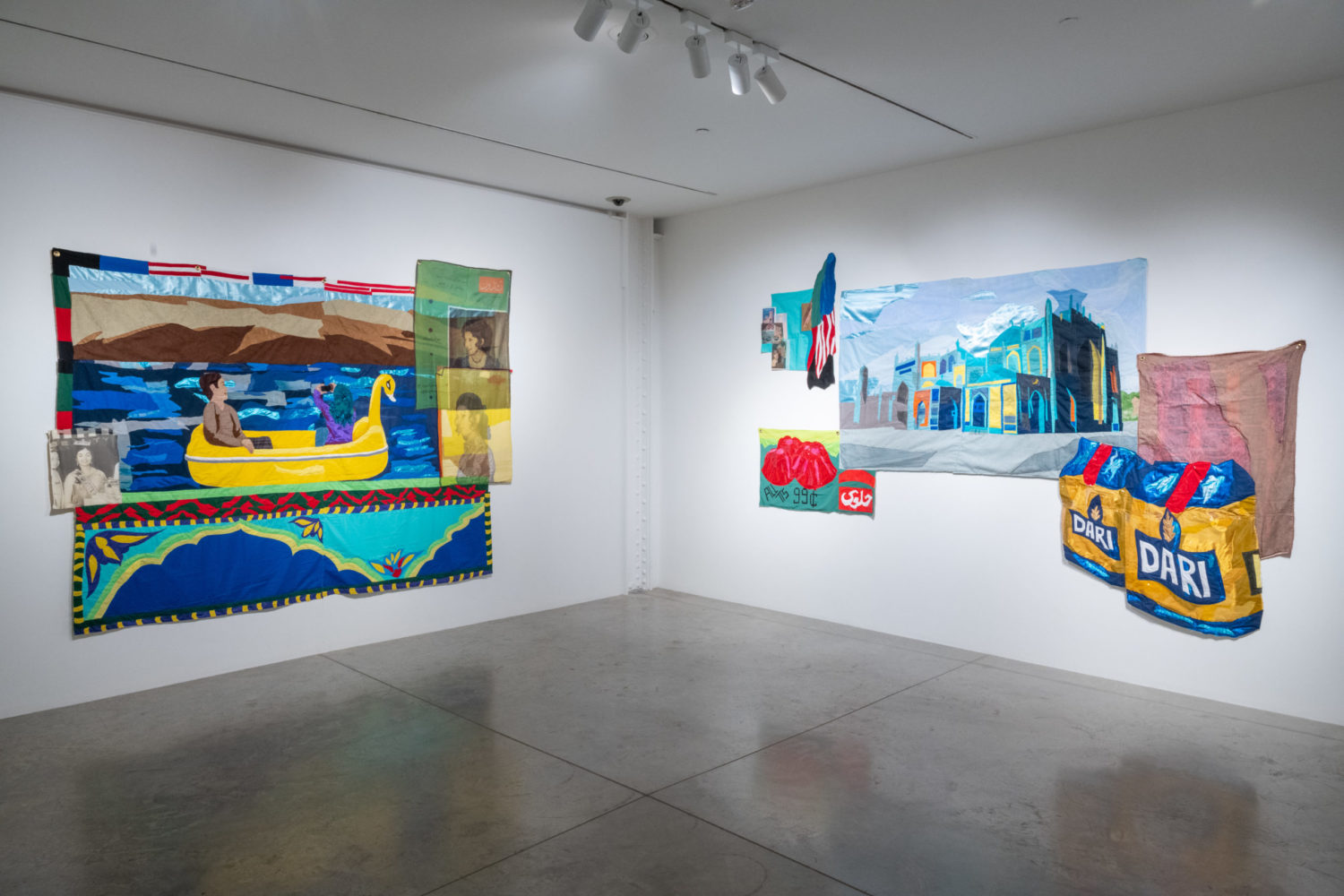 Installation view of Hanagama Amiri’s “Wandering Admidst the Colors,” photo by Casey Kelbaugh, courtesy of the artist and Albertz Benda.
Installation view of Hanagama Amiri’s “Wandering Admidst the Colors,” photo by Casey Kelbaugh, courtesy of the artist and Albertz Benda.






